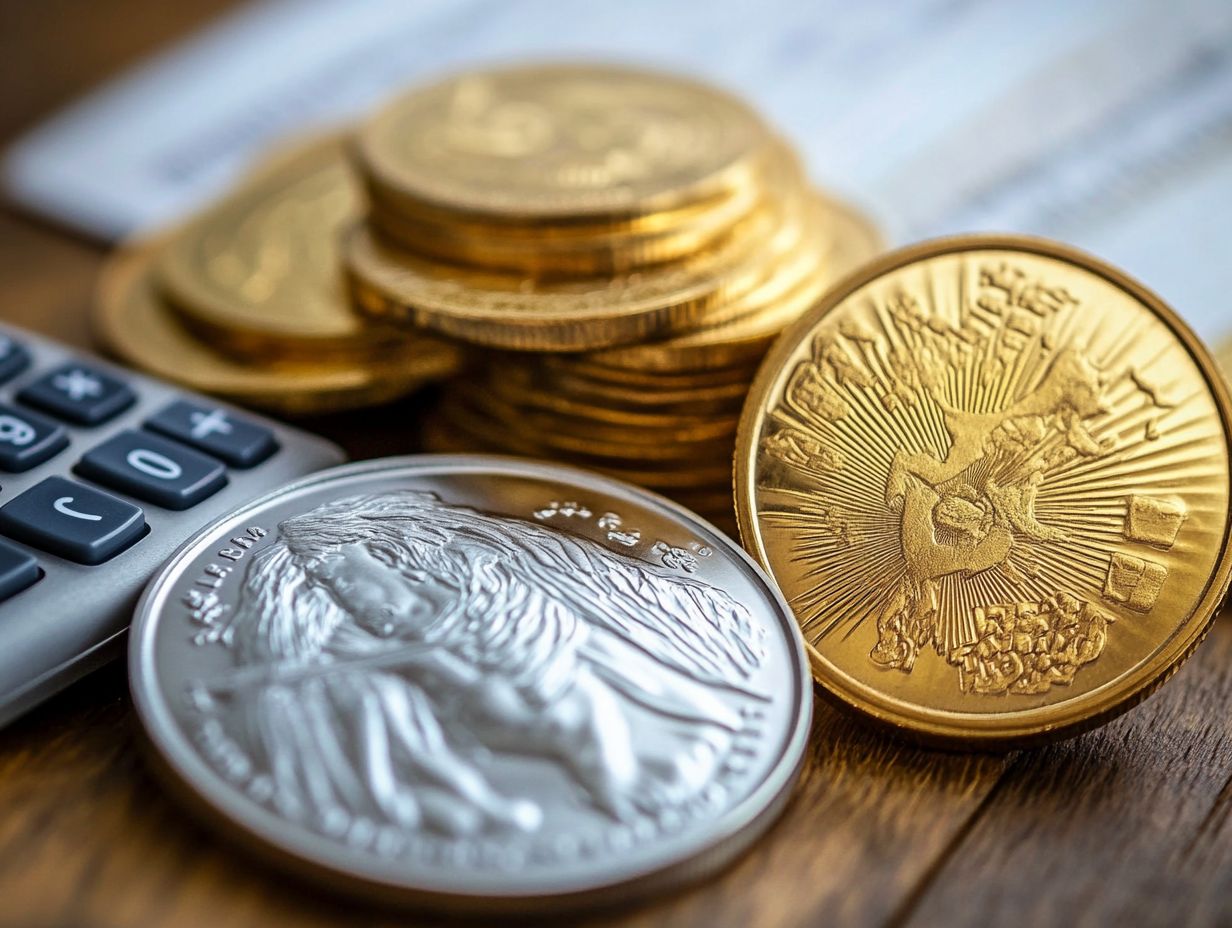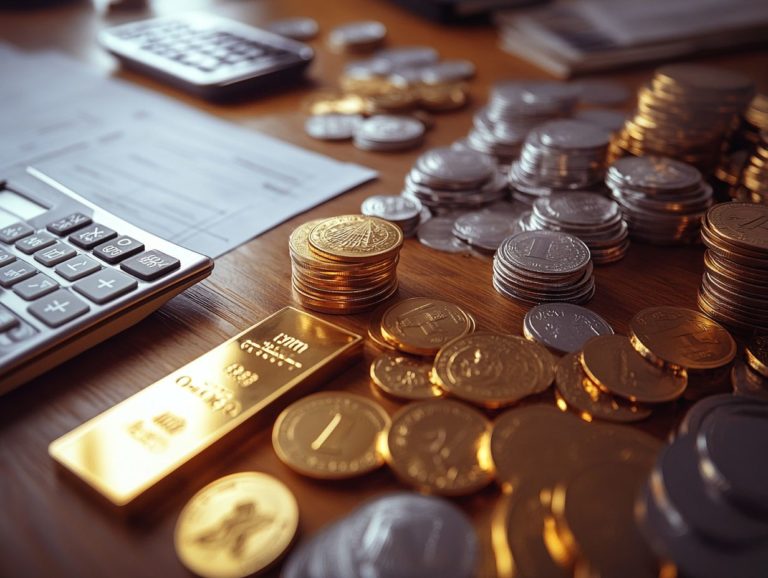Tax Planning for Precious Metals in Your Portfolio
Investing in precious metals can be a savvy enhancement to your financial portfolio. However, it s crucial to grasp the tax implications that accompany it.
There are various types of precious metals to consider, and understanding the nuances of tax reporting is essential. Strategies to minimize your tax burden will help you navigate this intricate landscape.
This article delves into the essential facets of precious metal investments. Empower yourself to maximize your returns and seamlessly integrate these assets into your overall tax strategy.
Contents
- Key Takeaways:
- Types of Precious Metals
- Tax Strategies for Investing in Precious Metals
- Tax Reporting Requirements for Precious Metals
- Incorporating Precious Metals into Your Overall Tax Plan
- Frequently Asked Questions
- What is tax planning for precious metals in your portfolio?
- Why is tax planning important for precious metals in your portfolio?
- What are some tax planning strategies for precious metals in your portfolio?
- Do I have to pay taxes on gains from selling precious metals in my portfolio?
- Are there any tax benefits to holding precious metals in my portfolio?
- What should I consider when engaging in tax planning for precious metals in my portfolio?
Key Takeaways:
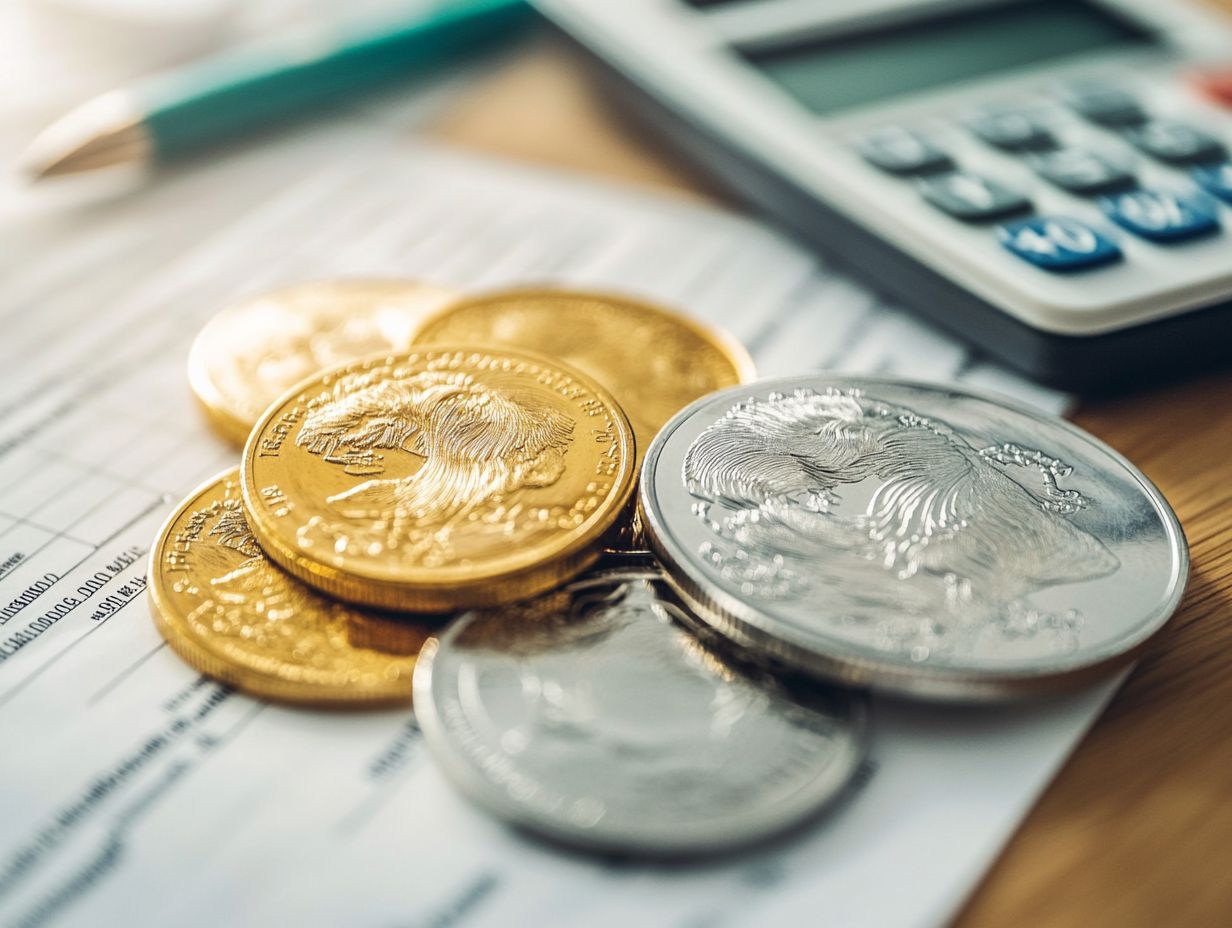
- Diversifying your portfolio with precious metals can have significant tax implications. Understand the different types and their potential taxes.
- Minimize taxes and maximize returns by strategically investing in precious metals and incorporating them into your overall tax plan.
- Properly reporting precious metals on your taxes is crucial to avoid penalties. Consult with a tax professional for guidance to ensure compliance with tax laws.
Understanding Precious Metals and Their Tax Implications
Understanding precious metals and their tax implications is essential for you as an investor. This knowledge helps you optimize financial growth and minimize tax burdens.
Investments in precious metals, such as gold and silver, have unique characteristics that set them apart from other options. While they can offer certain tax advantages, they also come with specific tax liabilities.
Careful navigation is required to maximize returns while remaining compliant with rules set by the Internal Revenue Service, the U.S. tax agency. By grasping these nuances, you can craft effective tax strategies that align with your goals for portfolio diversification.
Other metals, like platinum and palladium, play significant roles in economic stability and investment portfolios. The real value of these metals often serves as a hedge against inflation and currency fluctuations, making them particularly appealing during uncertain times.
Keep a sharp eye on market trends, as fluctuations can greatly influence potential capital gains. Consulting a tax professional is crucial when handling these assets, enabling you to implement tax-efficient strategies.
Being discerning about when to sell or hold can enhance your profits and ensure adherence to IRS regulations. This approach maximizes the financial benefits of these valuable investments.
Types of Precious Metals
When you’re contemplating an investment in precious metals, familiarize yourself with the various options available. These include gold, silver, and their specific forms like physical gold and pure gold.
Each type presents distinct characteristics and potential advantages. They can enrich your investment portfolio and serve as a safeguard against inflation.
Different Types of Precious Metals to Consider for Your Portfolio
Incorporating various types of precious metals into your portfolio can yield significant benefits. These include diversification and protection against economic downturns.
Gold and silver investments are two primary categories that stand out as effective hedges against inflation while bolstering your overall asset protection.
You might also explore forms such as collectible coins and bullion bars. Each offers unique advantages and differing levels of liquidity, with collectibles carrying added historical value.
Striking a balance among these investments within your broader portfolio can help mitigate risks. This approach opens the door for potential returns, especially during volatile market conditions.
Effective portfolio management is crucial here. Ensure that precious metals are allocated wisely among riskier assets, acting as a safeguard against inflation and market fluctuations. Additionally, it’s important to be aware of understanding your tax obligations for precious metals to maintain a healthy financial strategy.
Tax Strategies for Investing in Precious Metals
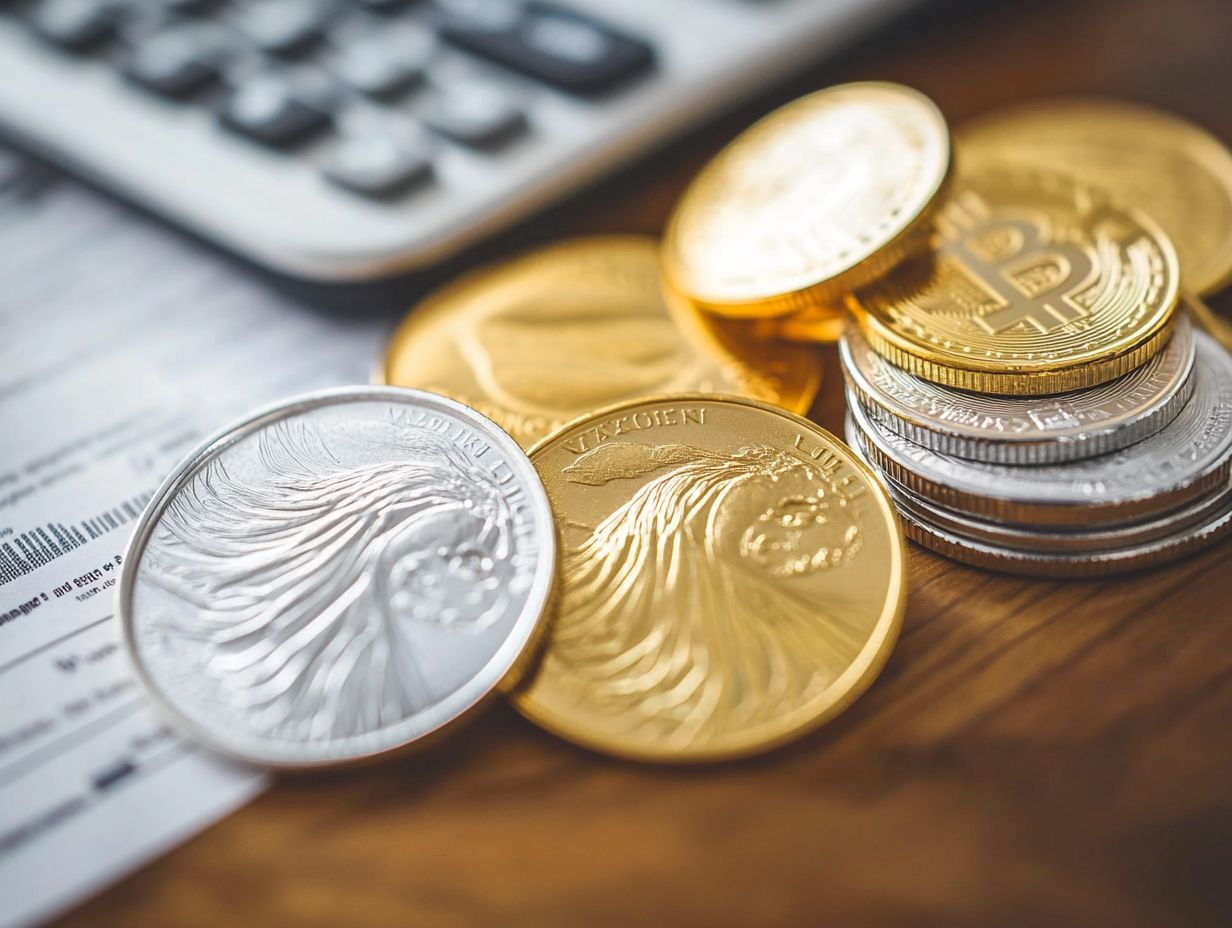
Tax strategies for investing in precious metals are crucial for optimizing your returns. You must understand how capital gains tax impacts these investments. Consider the potential of tax loss harvesting to counterbalance any capital losses you may encounter.
By doing so, you can enhance your overall investment strategy. This knowledge helps you navigate the complexities of precious metal investments with greater confidence.
Minimizing Taxes and Maximizing Returns
Minimizing taxes while maximizing returns in your precious metals investing journey requires deft navigation of complex tax regulations. A solid understanding of how the IRS taxes your investments is essential.
Employing effective investment strategies like leveraging tax deductions and utilizing tax-advantaged accounts can significantly boost your financial growth. This approach ensures compliance.
It also allows you to take full advantage of specific benefits that can reduce your taxable income. For example, by exploring options like contributing to a self-directed IRA, a retirement account that allows you to choose your own investments, including precious metals, you can include these assets in a tax-sheltered environment.
Consulting with a knowledgeable tax professional offers invaluable insights tailored to your unique financial landscape. By carefully selecting the right investment vehicles and implementing strategies aimed at minimizing tax liabilities, such as understanding tax deductions for precious metals investors, you can align your portfolio with your broader financial goals.
Tax Reporting Requirements for Precious Metals
Understanding the tax reporting requirements for precious metals is vital to stay out of trouble with the IRS tax laws. This awareness helps you steer clear of potential penalties.
As an investor, approach income reporting with diligence. Ensure that every transaction involving gold and silver investments is meticulously documented. Understanding the importance of tax withholding for precious metals can help clarify the tax implications, which can vary significantly based on your investment’s nature, making accurate reporting crucial for your financial well-being.
How to Properly Report Precious Metals on Your Taxes
Reporting your precious metals on taxes demands a thorough grasp of IRS tax laws regarding capital gains and income reporting. You must accurately document your transactions to ensure compliance and avoid unexpected tax consequences from misreporting.
Start by familiarizing yourself with the specific IRS forms needed for these investments, especially Schedule D and Form 8949. These forms are where you’ll log detailed transactions.
It s essential to keep meticulous records of every purchase and sale think receipts, invoices, and any relevant correspondence that can back up your claims. By diligently tracking the cost basis and sale price of each transaction, you ll be able to calculate your capital gains accurately.
These precise calculations not only help you maintain a good standing with tax authorities but also set the stage for a more favorable financial outcome in the event of an audit.
Incorporating Precious Metals into Your Overall Tax Plan
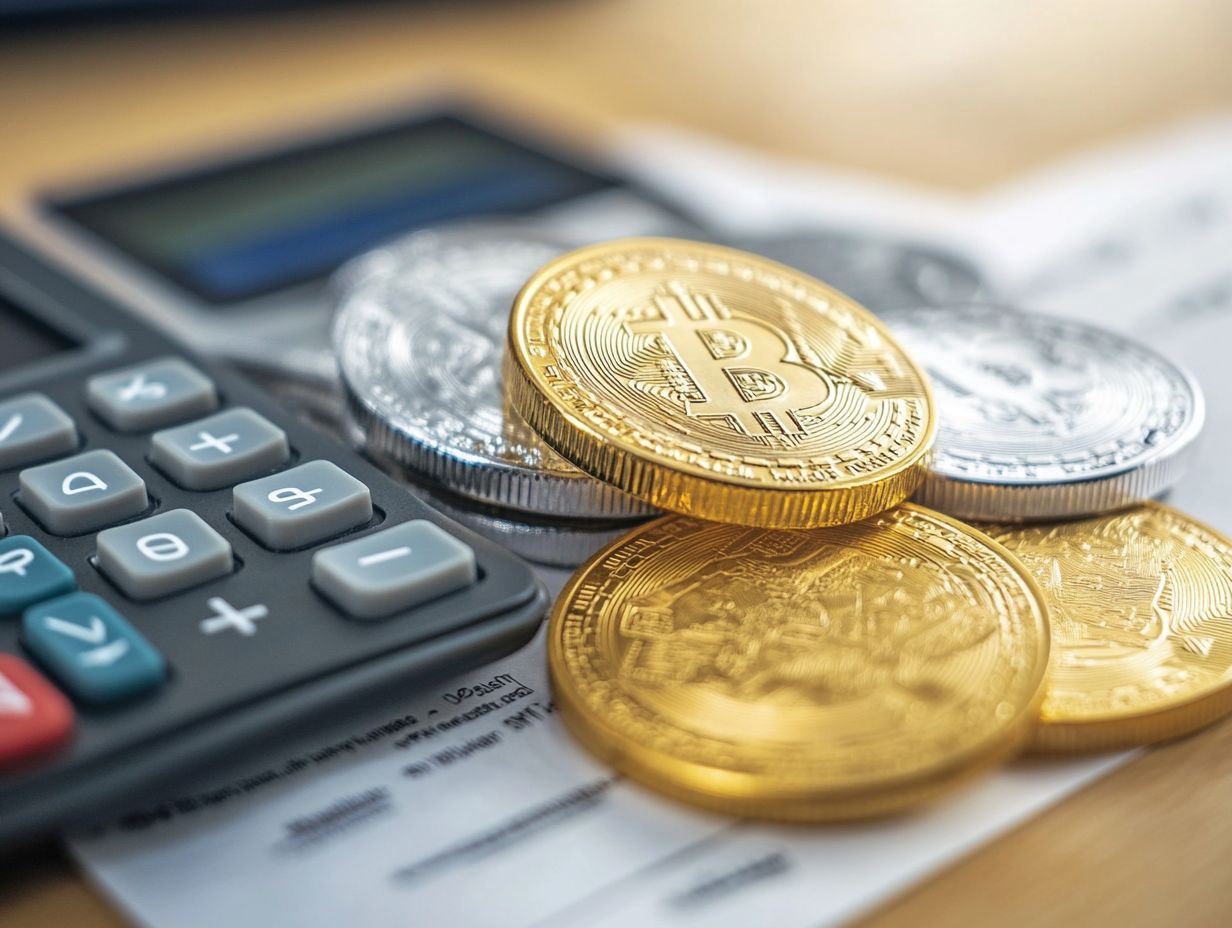
Integrating precious metals into your tax plan can offer significant tax benefits while acting as a robust strategy for asset protection. Grasping the interplay between these investments and tax-efficient strategies can cultivate a comprehensive financial approach.
This approach not only enhances stability but also fosters growth in your portfolio. To make informed decisions, consider exploring the pros and cons of taxing precious metals. Act now to ensure your portfolio benefits from these tax strategies before the tax deadline hits!
Integrating Precious Metals into Your Tax Strategy for Optimal Results
Integrating precious metals into your tax strategy is essential for achieving optimal investment performance and tax efficiency. By collaborating with a skilled financial advisor, you can align your precious metals holdings with your broader investment strategies and tax planning objectives.
This partnership allows for a thorough review of your portfolio, ensuring that each asset class contributes meaningfully to your overall financial goals. While precious metals can serve as a robust hedge against inflation and economic downturns, improper positioning can introduce compliance challenges and potential tax liabilities. Proper tax planning for precious metals in a diversified portfolio is essential to avoid these issues.
Financial advisors can provide invaluable guidance on how to strategically allocate these assets, striking a balance between benefits and associated risks to maximize your returns. They also keep you informed about regulatory changes that could impact your investments, ensuring that you remain compliant while optimizing your tax outcomes.
Frequently Asked Questions
What is tax planning for precious metals in your portfolio?
Tax planning for precious metals in your portfolio involves strategizing how to minimize the tax implications of buying, selling, and holding precious metals in your investment portfolio.
Why is tax planning important for precious metals in your portfolio?
Precious metals, such as gold and silver, are considered collectibles by the IRS and are subject to different tax rates and rules than traditional investments. Therefore, tax strategies for precious metals in emerging markets are crucial to ensure you are not overpaying in taxes and to maximize your overall portfolio returns.
What are some tax planning strategies for precious metals in your portfolio?
One strategy is to hold precious metals in a tax-advantaged account, such as a self-directed IRA. This allows for tax-deferred or tax-free growth of your precious metals investments. Additionally, timing your purchases and sales strategically can also help reduce the tax impact on your portfolio.
Do I have to pay taxes on gains from selling precious metals in my portfolio?
Yes, gains from selling precious metals in your portfolio are subject to capital gains taxes. However, there are different tax rates for short-term gains (held for less than a year) and long-term gains (held for more than a year).
Are there any tax benefits to holding precious metals in my portfolio?
Yes, in certain circumstances, holding precious metals in your portfolio can provide tax advantages. For example, if you hold physical precious metals for investment purposes, you may be eligible for a tax deduction for losses on those investments.
What should I consider when engaging in tax planning for precious metals in my portfolio?
It is important to consult with a qualified tax advisor or financial planner to assess your individual tax situation and develop a customized tax plan. Additionally, staying informed about changes in tax laws and regulations can also help inform your tax planning strategies for precious metals in your portfolio.










